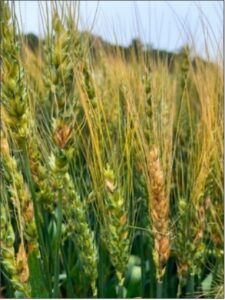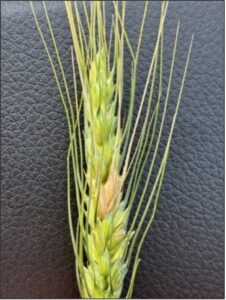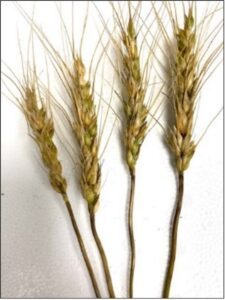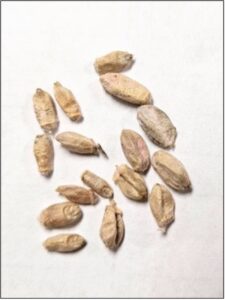Identifying Fusarium Head Blight Symptoms in Spring Wheat

Fusarium head blight (FHB) is a complex and potentially devastating disease for Manitoba farmers. Identifying field areas with high levels of FHB infection and Fusarium-damaged kernels (FDK) is important when making harvest management decisions. Recognizing FHB symptoms is key to identifying infected wheat heads, but first, we need to identify the parts of a wheat head to properly make disease assessments (Figure 1).
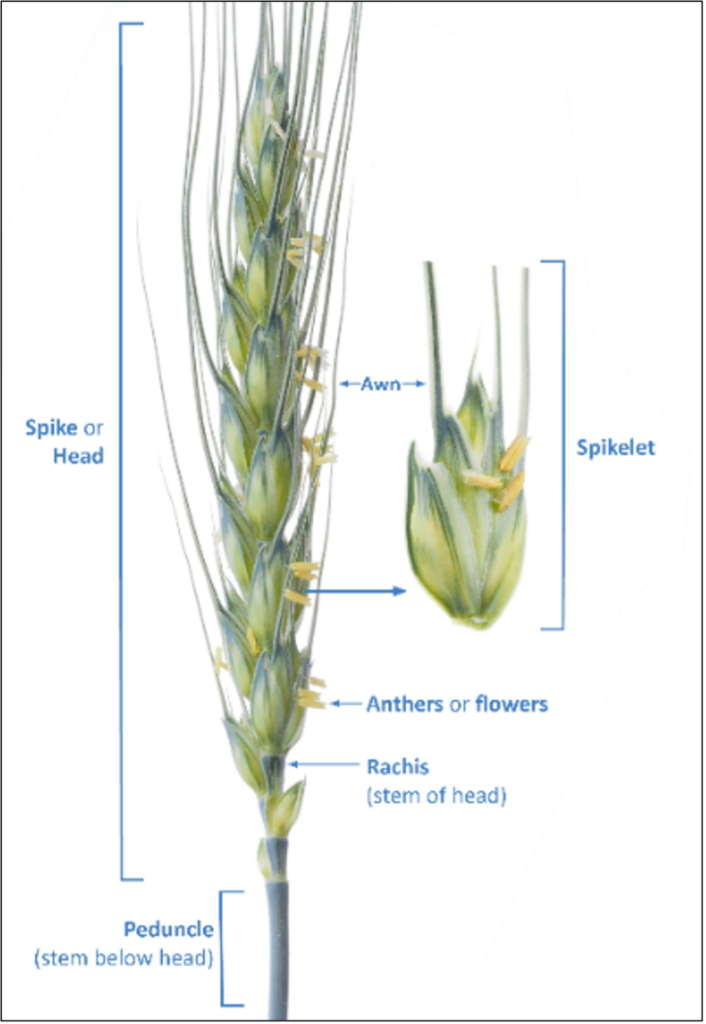
Figure 1. Wheat head parts during flowering. Photo credit: University of Wisconsin (used with permission).
FHB diagnostic symptoms can be found below and in Figure 2:
- Premature bleaching of wheat heads and spikelets.
- Orange-pink sporulation or white/orange superficial fungal growth on the seams of glumes and spikelets.
- Dark purple-brown discolouration of the stem right below the wheat head (peduncle).
- White, chalky and shrivelled kernels (i.e., FDK).
Figure 2. Examples of FHB-infected wheat heads (left), spikelet (middle left) and peduncles (middle right), and Fusarium-damaged kernels (right). Photo credit: David Kaminski.
There are many diseases and abiotic stresses that can be confused with FHB infection and we saw an excellent example of this in 2024. Farmers and agronomists were finding wheat heads that had a salmon-pink colour on spikelets and glumes (Figure 3). The affected wheat heads were empty or had only a few shrivelled kernels (Figure 3).
Although these sound like FHB symptoms, in these cases the problem was a little more complicated. The pink colouration of the wheat heads was most likely due to a saprophytic microorganism that grows on dead plant tissue, which means these wheat heads prematurely died. In several cases, the cause of plant death was probably hot, dry conditions in combination with a common root rot infection.
Common root rot typically impacts the whole plant when symptoms are found in mature plants. Symptoms include premature plant death, with bleached or very light green stems and heads. As well, symptoms include sudden death, reduced root growth, and root and crown decay. The sub-crown internode will decay and turn a dark/reddish brown. The whole plant can be removed from the soil with a moderate pull.
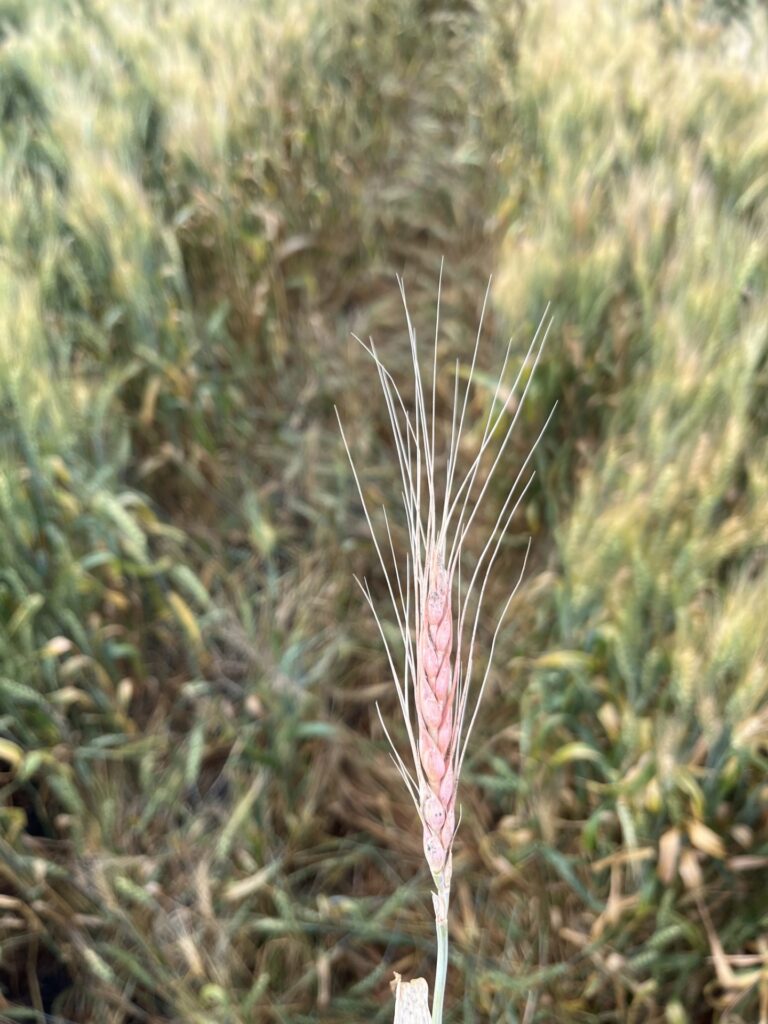
Figure 3. Wheat head colonized with a saprophytic microorganism.

